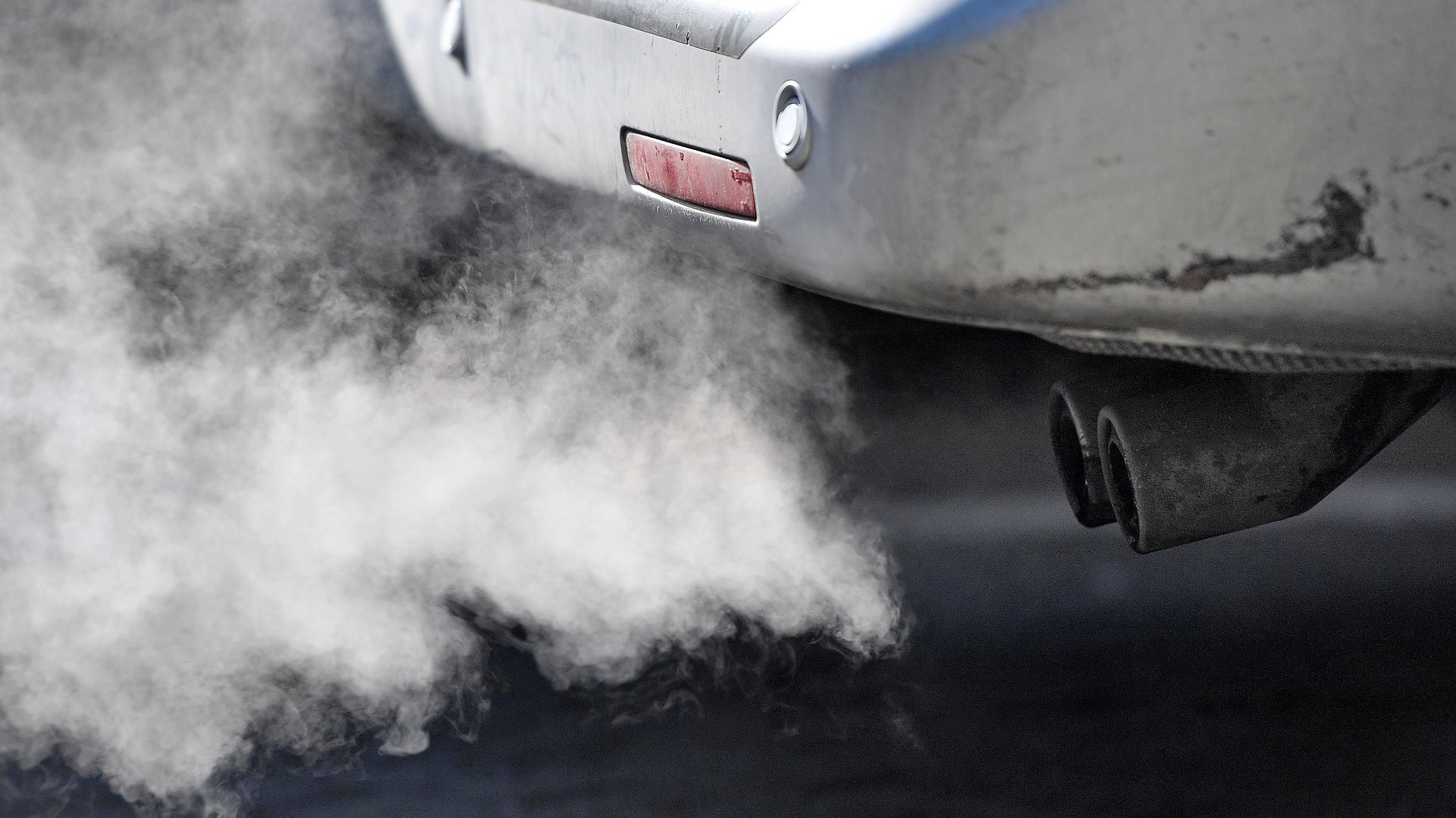We’re just learning how exposure to air pollution degrades our brains
There are all kinds of impurities from industrial activities like manufacturing and transportation that can poison the air. The smallest seem to be the most sinister.


There are all kinds of impurities from industrial activities like manufacturing and transportation that can poison the air. The smallest seem to be the most sinister.
Particles called PM2.5, which come from burning fossil fuels, including gasoline for transportation, are just two-and-a-half millionths of a meter or smaller in diameter, small enough to make their way from the lungs into the bloodstream. In 2015, there were 4.2 million deaths related to exposure to PM2.5 worldwide, the equivalent of more than 7% of all deaths that year. Over 95% of the global population is exposed daily to PM2.5 levels that the World Health Organization considers dangerous.
A growing body of evidence is starting to show that exposure to PM2.5 pollution is also tied to poor cognitive function in children and adults, and an uptick of dementia rates in the elderly.
Last month, researchers from the International Food Policy Research Institute examined the relationship between air pollution exposure and cognitive performance. They looked at the results of two sets of surveys conducted first in 2010, and then again in 2014, assessing the math and verbal skills of over 32,000 teens and adults. They then mapped air pollution rates onto the addresses of participants. The analysis included sulphur dioxide, nitrogen dioxide (one of the many forms of a nitrogen-oxygen molecule produced through industrial activity), and any particulate matter smaller than 10 microns (a unit of length equal to one millionth of a meter) in diameter, including, but not limited to, PM2.5.
They found that people living in areas with lower-quality air tended to perform worse on these math and verbal assessments over time (paywall). Men who were the least educated and living in areas with the most air pollution had the largest differences in performance between the first and second surveys. “The damage on cognitive ability by air pollution also likely impedes the development of human capital,” Xiaobo Zhang, an economist at Peking University and lead author of the paper, told CNN. In other words, declining intellectual capacities related to air pollution could be a factor that leads to cycles of poverty.
But it gets worse. One of the suspected risk factors for developing dementia is cognitive decline earlier in life. And recently, a separate team of researchers found an increased risk for dementia (paywall) in elderly populations in areas where air quality is worse.
A team from Arizona State University tracked cases of dementia from 2004 to 2013 in the US using Medicare data, which includes people over the age of 65. They then mapped the Medicare data over air quality records from US Environmental Protection Agency (EPA). In total, they had data on almost 7 million people that decade.
As of 2012, the EPA mandates that PM2.5 can’t exceed 12 micrograms (μg, equivalent to one millionth of a gram) per cubic meter. The team found that if a person is exposed to PM2.5 levels of 13.2 μg per cubic meter over the course of a decade, their risk for dementia increases about 1.3%. For context, the population-wide risk of developing dementia at 85 is about 20%. “What our results show is the 10% increase in the level of pollution that a person faces over a decade increases dementia by about the same as the risk of having hypertension,” says Jonathan Ketcham, a health care economist at Arizona State University and lead author of the paper.
Due to a shift in EPA policy, the team was also able to find that lowering levels of air pollution decreases the prevalence of dementia. In 1997, the EPA mandated that the average annual concentration of PM2.5 couldn’t exceed 15.05 μg per cubic meter; in 2005, the regulatory body began to crack down on counties not complying with the limits, largely in California and parts of the east coast. Air quality continued to improve, and with it, dementia prevalence decreased. (The study ended too quickly after the EPA changed the limit to 12 μg to examine the effect of the new regulation on dementia rates.)
These two studies strengthen a body of scientific work suggesting that exposure to fine particulate matter over time somehow degrades the brain. Many questions remain. It’s not clear, for example, what amount of exposure time is dangerous, what (if any) level of exposure is completely safe, and whether or not a person can recover from the cognitive stress related to PM2.5 pollution by, say, moving to somewhere with cleaner air.